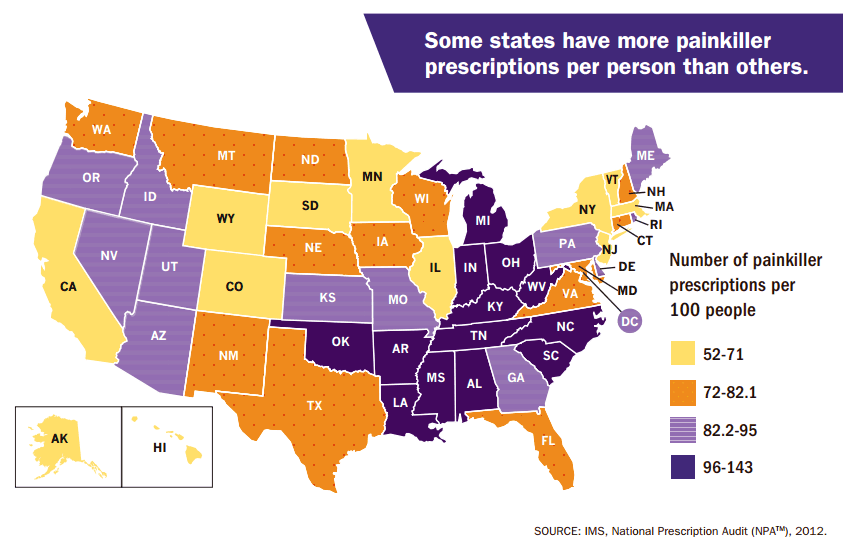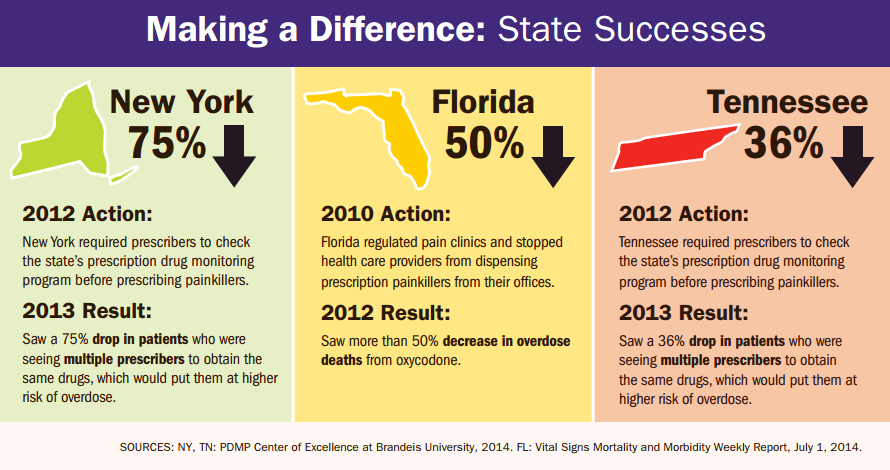

Health care providers wrote 259 million prescriptions for opioid painkillers in 2012, and providers in some states prescribed far more painkillers than those in other states, according to Vital Signs, the report by the Centers for Disease Control and Prevention that highlights the danger of overdose.
The report also has an example of one state—Florida—that reversed its overdose trend.
Health care providers in Alabama, the highest prescribing state, wrote almost three times as many of these prescriptions per person as those in the lowest prescribing state, Hawaii. Most of the highest prescribing states were in the South.
The CDC said previous research has shown that regional variation in use of prescriptions cannot be explained by the underlying health status of the population.
The Vital Signs report includes a study highlighting the success of Florida in reversing prescription drug overdose trends. Results showed that after statewide legislative and enforcement actions in 2010 and 2011, the death rate from prescription drug overdose decreased 23 percent between 2010 and 2012. Florida officials had taken these actions in response to a 28 percent increase in the drug overdose death rate over the preceding years (2006-2010).
Declines in death rates in Florida for specific prescription painkillers (oxycodone, methadone and hydrocodone) and sedatives paralleled declines in prescribing rates for those drugs. This report was based on Florida Medical Examiners Commission data from 2006 to 2012 and IMS Health National Prescription Audit data from 2008 to 2012.
“Prescription drug overdose is an epidemic in the United States. All too often, and in far too many communities, the treatment is becoming the problem,” said CDC Director Tom Frieden, M.D., M.P.H. “Overdose rates are higher where these drugs are prescribed more frequently. States and practices where prescribing rates are highest need to take a particularly hard look at ways to reduce the inappropriate prescription of these dangerous drugs.”
For this Vital Signs report, the CDC analyzed 2012 prescribing data collected from retail pharmacies in the United States by a commercial vendor. The CDC calculated prescribing rates by state for various types of opioid painkillers.
Key findings include:
“We know we can do better. State variation in prescribing shows us that the overprescribing of opioids can be reduced safely and feasibly,” said Daniel M. Sosin, M.D., M.P.H., F.A.C.P., acting director of the CDC’s National Center for Injury Prevention and Control. “Improving how opioids are prescribed will help us prevent the 46 prescription painkiller overdose deaths that occur each day in the United States.”
According to the CDC, previous research has shown that state variation does not necessarily translate to better health outcomes or patient satisfaction. In fact, high rates of use might produce worse outcomes.
According to the report, there are steps that states can take to address the overprescribing of painkillers including:

Source: Centers for Disease Control and Prevention